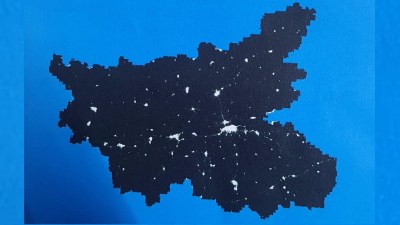Weather burns a hole into India’s bread basket
At a time when wheat stocks have hit a new low, there is a serious problem to reckon with. Over the last five years, the per hectare yield o...

At a time when wheat stocks have hit a new low, there is a serious problem to reckon with. Over the last five years, the per hectare yield of wheat in Punjab has fallen. Experts believe it is due to the temperatures rising steadily in January and February, a time most crucial for the wheat crop.
The average day and night temperatures have been 4-5 degrees Celsius higher than the normal.
The average yield of wheat has fallen from 4,696 kg per hectare in 1999-2000 to 4,221 kg per hectare in 2004-05. The production is also expected to fall: in 2005, Punjab produced 146.98 lakh metric tonnes of wheat, while the projection for this year is 146.25 lakh metric tonnes.
Punjab Agriculture University says they have begun to realise the gravity of the situation but are yet to tailor specific programmes to address this need. Punjab contributes 60 per cent to the central pool of foodstock making it vital for the state to address the issue.
Dr B S Sidhu, Director, Department of Agriculture, says, ‘‘I plan to take up this issue at the National Conference on Agriculture which will be held next month. The state has already prepared a document.’’
According to him, temperature patterns in the last 25 years suggest the average maximum and minimum temperatures in the last five years are almost 4-5 degrees higher. ‘‘Wheat is a crop which needs low temperature for the kernel to form,’’ said Sidhu. Untimely high temperatures reduce the moisture content and affect the grain quality.
Figures show that the average maximum temperature in the last 25 years was around 27 degrees Celsius and this would be reached only in March. Now this high is reached by the last week of January or the first week of February.
For a state which produces 2 per cent of the global wheat production from a total area of 34 lakh hectares, Sidhu suggests that “rescheduling of cultivation and agronomic practices of this crop needs to be done at the earliest.’’ He plans to call experts from various fields of agriculture to determine the pattern of climatic changes, their impact on the crop cultivation pattern, yield and total production.
Lal Singh Brar, head of department of agronomy and agrometrology in PAU who is also a well known breeder said, ‘‘we can never predict the weather and in a such a situation PAU can do nothing. Keeping in mind the short-term temperature changes, we keep on advising the farmers what to do. Like, if the temperatures rise, we tell the farmers to apply light irrigation to their fields. As far as researching on this issue is concerned, we have done nothing till date.’’
For now, it is only short-term advice on what to grow. The Indian Council for Agriculture Research has written to the agriculture director of wheat-growing states to advise frequent irrigation to farmers. The temperature rise of 3 – 4 degrees in the last few days is likely to affect the crop.
In Punjab, the tillering is complete and with the rising temperatures, it is likely to mature a week early.
For now, the farmers are hoping for rain early next week to provide remedy to the situation.
Photos





- 01
- 02
- 03
- 04
- 05

























